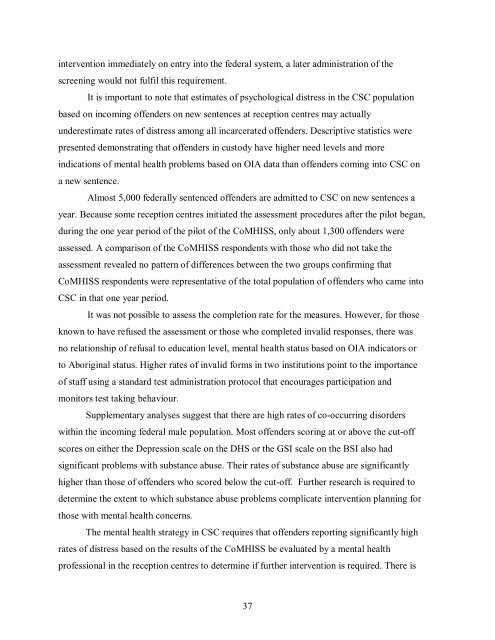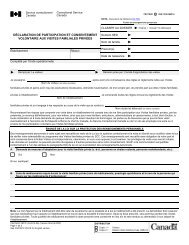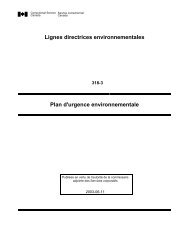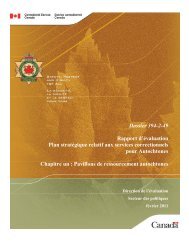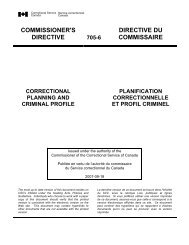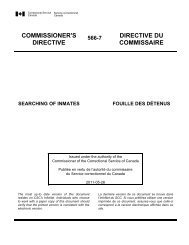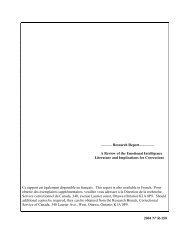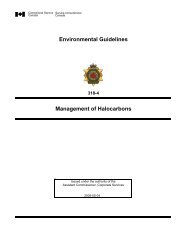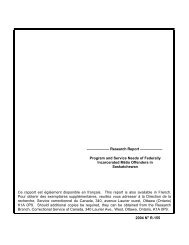The Brief Symptom Inventory (BSI) - Service correctionnel du Canada
The Brief Symptom Inventory (BSI) - Service correctionnel du Canada
The Brief Symptom Inventory (BSI) - Service correctionnel du Canada
You also want an ePaper? Increase the reach of your titles
YUMPU automatically turns print PDFs into web optimized ePapers that Google loves.
intervention immediately on entry into the federal system, a later administration of the<br />
screening would not fulfil this requirement.<br />
It is important to note that estimates of psychological distress in the CSC population<br />
based on incoming offenders on new sentences at reception centres may actually<br />
underestimate rates of distress among all incarcerated offenders. Descriptive statistics were<br />
presented demonstrating that offenders in custody have higher need levels and more<br />
indications of mental health problems based on OIA data than offenders coming into CSC on<br />
a new sentence.<br />
Almost 5,000 federally sentenced offenders are admitted to CSC on new sentences a<br />
year. Because some reception centres initiated the assessment proce<strong>du</strong>res after the pilot began,<br />
<strong>du</strong>ring the one year period of the pilot of the CoMHISS, only about 1,300 offenders were<br />
assessed. A comparison of the CoMHISS respondents with those who did not take the<br />
assessment revealed no pattern of differences between the two groups confirming that<br />
CoMHISS respondents were representative of the total population of offenders who came into<br />
CSC in that one year period.<br />
It was not possible to assess the completion rate for the measures. However, for those<br />
known to have refused the assessment or those who completed invalid responses, there was<br />
no relationship of refusal to e<strong>du</strong>cation level, mental health status based on OIA indicators or<br />
to Aboriginal status. Higher rates of invalid forms in two institutions point to the importance<br />
of staff using a standard test administration protocol that encourages participation and<br />
monitors test taking behaviour.<br />
Supplementary analyses suggest that there are high rates of co-occurring disorders<br />
within the incoming federal male population. Most offenders scoring at or above the cut-off<br />
scores on either the Depression scale on the DHS or the GSI scale on the <strong>BSI</strong> also had<br />
significant problems with substance abuse. <strong>The</strong>ir rates of substance abuse are significantly<br />
higher than those of offenders who scored below the cut-off. Further research is required to<br />
determine the extent to which substance abuse problems complicate intervention planning for<br />
those with mental health concerns.<br />
<strong>The</strong> mental health strategy in CSC requires that offenders reporting significantly high<br />
rates of distress based on the results of the CoMHISS be evaluated by a mental health<br />
professional in the reception centres to determine if further intervention is required. <strong>The</strong>re is<br />
37


